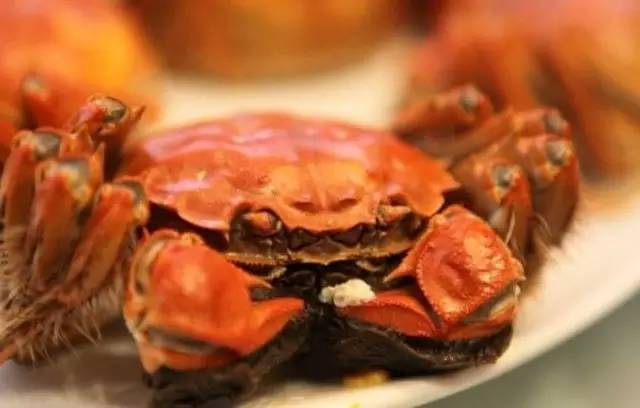
Life question: why does the crab turn red when it is ripe?
Why are crabs so popular?
Generally speaking, crabs and shrimps are blue when they are raw, but when they are steamed in a pot, they can't even turn red. What's going on here?
the pigment that controls the color of crabs is called astaxanthin, and this molecule can also be called astaxanthin, which belongs to a kind of carotenoids. The name sounds crazy, right? is it green or red? it's a bit accurate. Don't worry, let's talk about it slowly. Whether it is blue or red has something to do with the state in which this molecule exists.
if astaxanthin alone (that is, free state), it is orange, that is, cooked crab color. What appears bluish blue is the state in which it binds to a protein (called chitin), which is the color of raw crab. And if the structure and function of the protein are destroyed as soon as it is heated, it becomes the color of the free state again, which is why the crab turns red.
if you want to go further with the explanation, you need to talk a little more about chemistry. The following maybe a little more complicated, so first release the crab to ease the atmosphere:
first of all, let's talk about where the color of the matter comes from. If it is a chemical color, it is caused by the transition of electrons. The outer electrons of these molecules absorb photons of specific energy and jump to relatively high-energy orbitals. If it happens to absorb visible light, it will show a color that complements the absorbed light. Another color comes from fluorescence, which first absorbs photons and then emits photons visible to the human eye when they jump back (back to the ground state).
Choose black wedding dresses that resonates well with your style of choice. Do it now and enjoy the incredible shopping experience.
it is the state of these electrons that determines whether there is a color and what color it is, and how much energy is required for their transition has a lot to do with the bonding mode and chemical structure of the compound. If a colored compound changes the structure and bonding state of the molecule, the color will change (or become colorless).
the same is true of astaxanthin, and its chemical structure is changed by binding to protein. Astaxanthin has the structure of ketones in its molecules. If you have studied this part of organic chemistry, you may know that one of the isomers of ketones is enol, but most of the time it is unstable. In chitin, however, the enol version of astaxanthin is relatively stable and enol anions are formed. (if you don't understand the previous paragraph, please see the following sentence.) it is this change in chemical structure that leads to the difference in color.
it's a bit of a surprise that although this is a phenomenon that has long been discovered, the change in chemical structure that I mentioned in my detailed explanation was only discovered by chemists in 2015.
an extra bean knowledge:
the orange-red color of salmon sprouting also comes from astaxanthin. Anyway, it's all delicious. Today, even after watching two versions of chemical crabs, they can also play _ (: soup ") _.